Mike Sutton tells the story of how August Kekulé dreamt up the structure of benzene
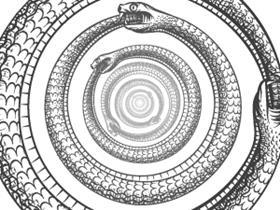
‘I was sitting writing at my textbook; but the work did not progress; my thoughts were elsewhere. I turned my chair towards the fire and dozed. Again the atoms were gambolling before my eyes. This time the smaller groups kept modestly in the background. My mental eye, rendered more acute by repeated visions of the kind, could now distinguish larger structures of manifold conformation: long rows, sometimes more closely fitted together; all twining and twisting in snakelike motion. But look! What was that? One of the snakes had seized hold of its own tail, and the form whirled mockingly before my eyes. As if by a flash of lightening I awoke; and this time I also spent the rest of the night in working out the consequences of the hypothesis.’ [August Kekulé, 1890]
By the middle of the 19th century, Europe’s chemists knew there was something odd about benzene. Several suspected that its oddness arose from the spatial organization of its atoms, but what their arrangement was remained mysterious. In 1865 the German chemist August Kekulé proposed a cyclic formula which eventually became accepted, although his unwieldy ‘sausage’ symbols were soon discarded.
The Association of German Chemists celebrated this discovery’s 25th anniversary with a congress – the Benzolfest. There Kekulé described, in the speech quoted above, how the idea came to him. Some historians find his account unconvincing, arguing that the credit for this breakthrough should be shared more widely. After 150 years the full truth may be irrecoverable, but the story raises issues which remain relevant today.
The name benzene derives from gum benzoin, a component of medicines, cosmetics and incense since antiquity. 16th-century European apothecaries dry-distilled it to obtain benzoic acid (still used today to treat skin diseases). Early 19th-century chemists identified other members of a ‘benzoyl’ family and in 1825, at London’s Royal Institution, Michael Faraday isolated a substance he called ‘bicarburet of hydrogen’, as its empirical formula was C2 H using the (then widely accepted) atomic weight of six for carbon.
Eilhard Mitscherlich studied this compound at the University of Berlin in the 1830s, calling it ‘benzin’, although others preferred the name ‘benzol’. In 1832 Justus Liebig and Friedrich Wöhler investigated several related substances, with limited success. However, by the 1850s distillation of coal tar – a by-product of gas and coke production – made these so-called ‘aromatic’ compounds more available. Their peculiarities attracted particular interest at London’s Royal College of Chemistry, a forerunner of Imperial College London.
Between 1845 and 1865 the College was headed by August Hofmann, a former pupil of Justus von Liebig’s imported from Germany to stimulate British industrial chemistry. Among his students were Charles Mansfield, who patented a process for distilling benzene from coal-tar, and William Perkin, who launched the aniline dye industry. Other prominent London chemists of that era included Alexander Williamson (at University College) and William Odling (at Guy’s Hospital), both of whom encouraged the young Kekulé while he worked there.
August Kekulé, 1829–1896
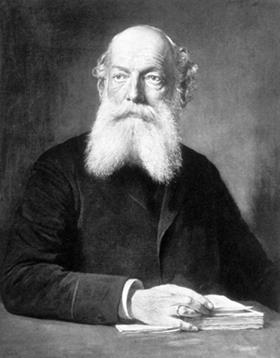
Kekulé’s Protestant ancestors fled from Bohemia during the sectarian strife of the 17th century, settling in Darmstadt, in the Grand Duchy of Hesse (now a German federal state). When Hesse became a French Protectorate in 1806 the family name acquired an acute accent, which survived after Napoleon’s empire collapsed. Friedrich August Kekulé (he rarely used his first name) was born in 1829. He entered the University of Giessen, Hesse, in 1847 intending to become an architect, but Liebig’s lectures attracted him to chemistry. On Liebig’s advice, he studied in Paris for a year before completing his Giessen doctorate in 1852.
After a year in Switzerland as assistant to Adolf von Planta – an ex-pupil of Liebig’s with a private laboratory – Kekulé worked for another of Liebig’s graduates, John Stenhouse, who taught medical students at St Bartholomew’s Hospital in London. Besides preparing experiments to illustrate Stenhouse’s lectures, Kekulé used the laboratory for his own studies and published significant research before returning to Germany in 1855.
Funded by his family, Kekulé began the process required for qualification as aprivatdozent (a licensed but unsalaried tutor) at the University of Heidelberg. He commenced teaching in 1856, and converted the attic of his lodgings into a laboratory. Further publications followed, and in 1858 he was appointed a professor at the University of Ghent in Belgium. Though he found lecturing in French demanding, Kekulé continued his research and started writing a textbook. He also became acquainted with William Drory, an English official in the Belgian gas industry, and in 1862 married William’s daughter, Stéphanie.
Stéphanie’s death only a year later, shortly after the birth of their son, left Kekulé distraught. After many months doing only routine work he recommenced his research in 1865, returning to Germany in 1867 as professor at the University of Bonn. In 1876, he married Louise Hôgel, his housekeeper, and they had three more children. Despite increasing health problems he remained involved in research, teaching and administration.
In 1895, Kaiser Wilhelm II ennobled him as ‘Kekule von Stradonitz’ – dropping the acute accent, though in chemical and historical texts he remains Kekulé. Within a decade of his death in 1896, three of his former students – Jacobus Van’t Hoff, Emil Fischer and Adolf von Bayer – gained Nobel prizes. This alone was a substantial legacy, but his work on molecular structure is his most celebrated achievement.
A structural dream
Some have suggested that Kekulé’s interest in molecular structures grew out of his youthful involvement with architecture. This is unprovable, but his remarkable ability to hold complex visual images ‘in the mind’s eye’ was clearly very helpful to him. At the 1890 Benzolfest he recalled two occasions when this capacity stimulated his research.
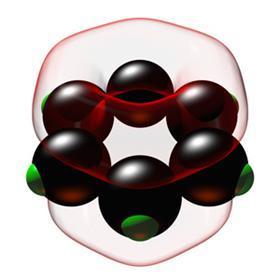
The first occurred on the upper deck of a horse-drawn omnibus carrying him to his London lodgings one evening in 1855. While dozing, he dreamed about carbon atoms dancing in groups, and afterwards wondered if they might join together in complex structures. However, this tempting idea clashed with a chemical theory which – though increasingly challenged – was still influential.
In the early 1800s Humphry Davy in the UK and Jöns Berzelius in Sweden had split compounds into their elements by electrolysis. Thereafter, it was widely assumed that attraction between oppositely charged atoms bound them together in molecules. This ‘dualistic’ concept made chains of identical (and hence mutually repellent) atoms seem implausible to many chemists. But some, including the Frenchmen August Laurent and Charles Gerhardt, argued that a single attractive force could not explain how so many different organic substances could be composed of the same few elements.
By the mid-19th century two alternative approaches had developed. The ‘radical theory’ focussed on identifying groups of atoms which occurred in several compounds while retaining a distinctive identity. The ‘theory of types’ prioritised the sorting of compounds into natural families. Both were handicapped by confusion over atomic weights and molecular formulae – whether carbon’s atomic weight was six or 12 remained uncertain until Avogadro’s hypothesis became generally accepted after 1860. Nevertheless, both systems encouraged speculations – already emerging for other reasons – about the spatial arrangement of atoms.
Earlier investigators had noted that several compounds exist in two different crystalline shapes (dimorphism), while some chemically distinct substances form geometrically identical crystals (isomorphism). Compounds with identical formulae but different properties – Berzelius named them ‘isomers’ – were also being discovered in increasing numbers. Nevertheless, explanations based on molecular geometry remained controversial. Several distinguished 19th century scientists – including Ernst Mach and Wilhelm Ostwald – regarded atoms as merely hypothetical entities, whose physical existence was unproven. However, the structural revolution in organic chemistry was sparked by individuals then on the margins of the profession.
A priority matter
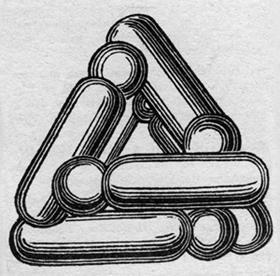
There has been some argument – aggravated by patriotic sentiments – over the allocation of credit for this breakthrough. The candidates include two Scots (Archibald Couper and Alexander Crum Brown), a Russian (Alexander Butlerov) and an Englishman (Edward Frankland) who all followed parallel paths to Kekulé. Couper’s article on molecular structures should have appeared first, but its publication was delayed until after Kekulé’s paper was printed in 1858. Butlerov’s numerous works (beginning in 1861) developed a more comprehensive theoretical framework, and some hail him as the true founder of structural chemistry. Crum Brown’s molecular diagrams – used in his 1861 thesis, and published in 1864 – most resemble those in use today, while Frankland introduced the term ’chemical bond’ in 1866. It is a tangled tale.
In 1867 Kekulé coined a new name – valenz – for what had previously been called the ‘atomicity’, ‘combining power’ or ‘saturation capacity’ of an element. It was widely adopted, becoming ‘valence’ in France and America and ‘valency’ in Britain. Kekulé’s structural diagrams were less popular. They pictured monovalent atoms like hydrogen and chlorine as simple circles, and carbon as an extended oval with four lobes. Often ridiculed as ‘sausage formulae’ they were soon abandoned.
While admitting the idea of molecular structure was in the air during this period, Kekulé still claimed priority in its discovery. Critics have suggested that the story of his dream on the Clapham omnibus was embroidered – or invented – to buttress this claim. Nevertheless, his assertion that carbon atoms could form chains made such an impact that the innovation was often attributed to him alone.
Hexagons on top
The conceptual leap from the carbon chain to the benzene ring is more widely recognised as Kekulé’s personal achievement, though there are other claimants. In 1861 Josef Loschmidt – a schoolteacher in Vienna – published a booklet on molecular structures suggesting several possibilities for benzene, including a ring. Some historians believe this invalidates Kekulé’s priority claim. Others regard it as an unsupported speculation which was never followed up.
Kekulé’s 1890 lecture asserts that his benzene structure emerged from a second dream, featuring a serpent biting its tail. It occurred in his bachelor lodgings in Ghent, during the winter of 1861–2. The tragic death of his young bride in 1863, and the lengthy period of depression which followed, probably explain why this idea remained unpublished until 1865, when he had more persuasive evidence than a dream for his closed chain model.

Later in 1865 he replaced the sausage formula with a plain hexagon, and in 1866 used a diagram with both double and single bonds. Kekulé argued that in a linear benzene structure, replacing one hydrogen atom with a chlorine atom should produce two isomers. But with a closed chain only one mono-substituted isomer should exist – which was indeed the case. Similarly, he correctly predicted that any di-substituted benzene would have three isomers (later designated ortho -, meta – and para-).
However, critics suggested that if this model were correct an ortho- di-substituted benzene ring should have two distinct isomers, depending upon whether the substituents were separated by a single or a double bond. In 1872, Kekulé responded by proposing a dynamic model for the benzene nucleus, with its carbon- carbon links continually switching between double and single bonds – though how this functioned could not then be explained. Alternative suggestions like James Dewar’s bridged molecule (1867) and Albert Ladenburg’s prism (1869) gained only limited support. (Both were eventually synthesised, and showed no benzene-like properties).
Most organic chemists simply accepted the hexagon as a convenient symbol and got on with their work. In a 1929 speech for Kekulé’s centenary, Henry Armstrong recalled that for many years ‘only a few pedants were concerned as to details of structure’. By the 1920s, however, valency theories involving shared electrons were stimulating fresh enquiries into the peculiarities of benzene and other aromatic compounds. In 1931 Erich Hückel developed a rule for predicting whether or not any given molecular structure would exhibit aromaticity, leading eventually to greater clarification of the concept.
Today, carbon continues to present us with structural surprises. Novel entities like buckyballs, nanotubes and graphene offer a bewildering array of possibilities awaiting exploration and exploitation. In this complex labyrinth, the cautious approach Kekulé recommended in 1890 remains valid. ‘Let us learn to dream … but let us beware of publishing our dreams before they have been put to the proof by the waking understanding.’
Mike Sutton is a visiting fellow in the department of humanities at Northumbria University, UK
References
W H Brock, The case of the poisonous socks, Royal Society of Chemistry, 2011
F R Japp, J. Chem. Soc. Trans., 1898,73, 97 (DOI: 10.1039/ct8987300097 )
A J Rocke, Image and reality: Kekulé, Kopp and the scientific imagination, University of Chicago Press, 2010
The Kekulé riddle: a challenge for chemists and psychologists, ed J H Wotiz, Cache River Press, 1993

![Top view of the single-crystal X-ray diffraction structure of a dithienothiophene (DTT)-bridged [34]octaphyrin](https://d2cbg94ubxgsnp.cloudfront.net/Pictures/380x253/3/6/2/132362_Bicyclic-Baird-type-aromaticity-fig-1-c.jpg)
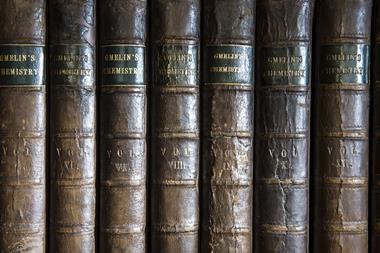
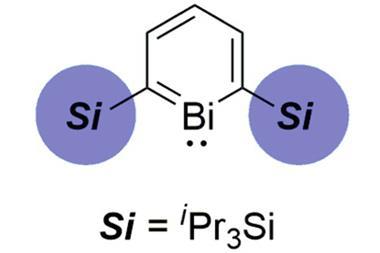








No comments yet